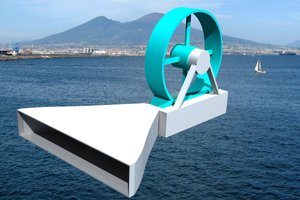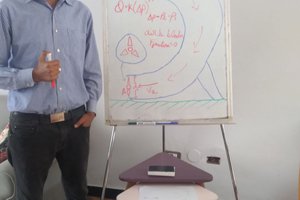Problem statement
Underwater sounds of varying intensity and duration, are generated during the four stages of a wind farm’s life cycle: Pre-construction, Construction, Operation and Decommissioning. During the operational stage of a wind farm, low frequency sound is produced when the blades are spinning. As a turbine operates, vibrations inside the nacelle (the housing that contains the generator, gearbox, and other parts) are transmitted down the main shaft of the wind turbine and into its foundation. These vibrations then propagate into the water column and seafloor. The sound is primarily below 1 kHz (generally below 700 Hz), with a source level of 80-150 dBre 1 µPa @ 1 m. Aerodynamic noise produced by the rotor blades may also enter the water through an airborne path. Sound levels increase slightly as wind speed increases. Many offshore wind farms are constructed in coastal waters. Significant growth in offshore wind development has led to concern about the potential for negative impacts on fishes, marine mammals, invertebrates, birds, and bats. Potential negative effects include collision, habitat displacement, and exposure to electromagnetic fields and underwater noise.
Our Solution
This project is about building a new system that can highly minimize sound vibration waves generated from off-shore wind turbines propagated in to the oceans killing and/or hurting aquatic animals. Because less sound is absorbed in solids and liquids than in gases, sounds can propagate over much greater distances in these mediums but not in vacuum. The sound waves generated by the wind turbines either from the collusion with air or from the mechanical components travels in the nearest surface water which will travel long distance affecting aquatic animals nearby because sound wave is less absorbed in oceans. This can be avoided by using vacuum blocking mechanism installed in surface of the shore where the wind turbine is erected X meter above from the level of the shore in 360 circular degrees. This will greatly minimize the propagation of the sound generated by the wind turbine and this can be proved by simple experiment in laboratory by vibration sensing devices.
Assumption
I am assuming that physical barrier will minimize sound waves generated by the collusion of the wind with the turbine blades.
Constrain to over come
The cover need to be 100 percent transparent to avoid dead zones below the turbine because natural life below need sun light like algae’s and other which are essential for the natural ecosystem of the shore. The only limitation from this mechanism is boat cannot travel because of the cover near the turbines but this is a good thing because it will maximize safety and ship navigation near off-shore wind turbines do not work either.
 Anteneh Gashaw
Anteneh Gashaw

 MECHANICUS
MECHANICUS
 Leo Mahdessian
Leo Mahdessian

I wonder could one input sound wave with microphone near water and play simultaneously downwards "reverse of the sound wave" so these would sum up to zero for noise cancellation to one direction. Would geometry allow this to work. Or use three microphones and three loudspeakers and get wider angle covered. Much like noise canceling head phones.